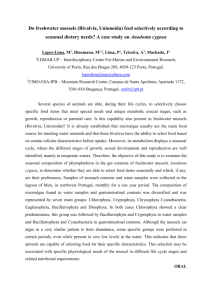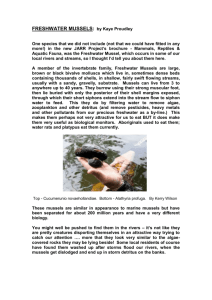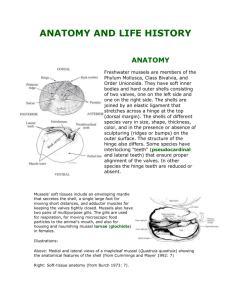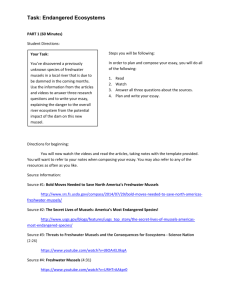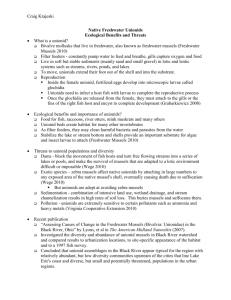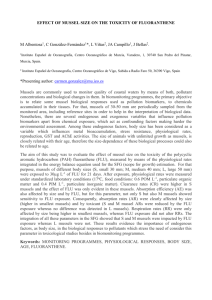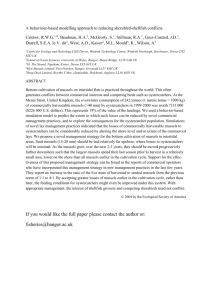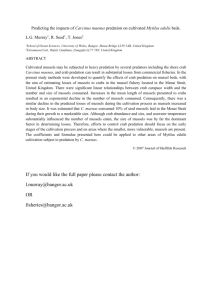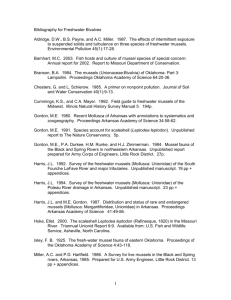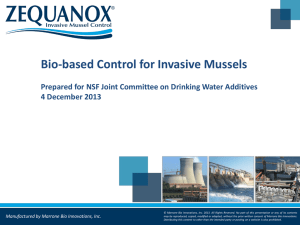SUBMERGENT VEGETATION - Freshwater Spills Information
advertisement
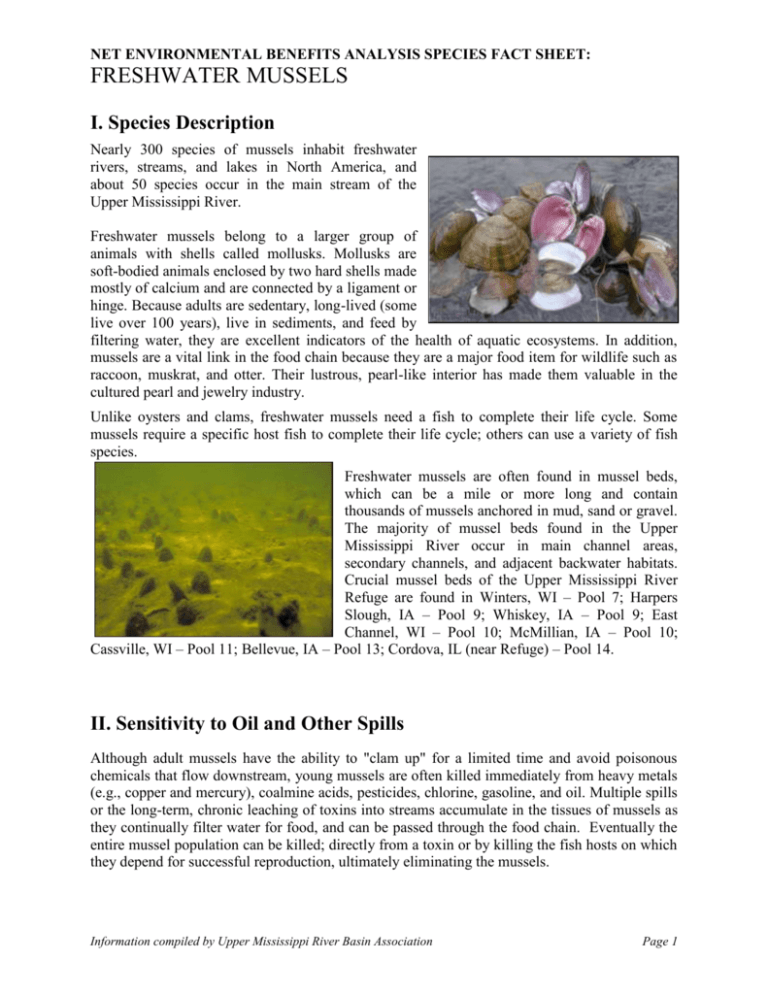
NET ENVIRONMENTAL BENEFITS ANALYSIS SPECIES FACT SHEET: FRESHWATER MUSSELS I. Species Description Nearly 300 species of mussels inhabit freshwater rivers, streams, and lakes in North America, and about 50 species occur in the main stream of the Upper Mississippi River. Freshwater mussels belong to a larger group of animals with shells called mollusks. Mollusks are soft-bodied animals enclosed by two hard shells made mostly of calcium and are connected by a ligament or hinge. Because adults are sedentary, long-lived (some live over 100 years), live in sediments, and feed by filtering water, they are excellent indicators of the health of aquatic ecosystems. In addition, mussels are a vital link in the food chain because they are a major food item for wildlife such as raccoon, muskrat, and otter. Their lustrous, pearl-like interior has made them valuable in the cultured pearl and jewelry industry. Unlike oysters and clams, freshwater mussels need a fish to complete their life cycle. Some mussels require a specific host fish to complete their life cycle; others can use a variety of fish species. Freshwater mussels are often found in mussel beds, which can be a mile or more long and contain thousands of mussels anchored in mud, sand or gravel. The majority of mussel beds found in the Upper Mississippi River occur in main channel areas, secondary channels, and adjacent backwater habitats. Crucial mussel beds of the Upper Mississippi River Refuge are found in Winters, WI – Pool 7; Harpers Slough, IA – Pool 9; Whiskey, IA – Pool 9; East Channel, WI – Pool 10; McMillian, IA – Pool 10; Cassville, WI – Pool 11; Bellevue, IA – Pool 13; Cordova, IL (near Refuge) – Pool 14. II. Sensitivity to Oil and Other Spills Although adult mussels have the ability to "clam up" for a limited time and avoid poisonous chemicals that flow downstream, young mussels are often killed immediately from heavy metals (e.g., copper and mercury), coalmine acids, pesticides, chlorine, gasoline, and oil. Multiple spills or the long-term, chronic leaching of toxins into streams accumulate in the tissues of mussels as they continually filter water for food, and can be passed through the food chain. Eventually the entire mussel population can be killed; directly from a toxin or by killing the fish hosts on which they depend for successful reproduction, ultimately eliminating the mussels. Information compiled by Upper Mississippi River Basin Association Page 1 NET ENVIRONMENTAL BENEFITS ANALYSIS SPECIES FACT SHEET: FRESHWATER MUSSELS III. Sensitivity to Response Methods Methods Causing Least Adverse Impacts Debris Removal Degree of oiling that warrants debris removal and disposal depends on human and sensitive resource use of the site Sorbents Overuse generates excess waste Physical removal rates of heavy oils will be slow, so less oil will be mobilized for recovery by sorbents Methods Causing Some Adverse Impact Natural Recovery Oil can stimulate algal production, which covers mussel beds inhibit feeding, and reduce the supply of oxygen. Sheltered mussels may need cleanup because of slow natural removal rates Flooding and Low-Pressure, Cold-Water Flushing Use on heavy oils is likely to leave large amounts of residual oil in the environment Use on gasoline spills may transport the oil to more sensitive habitats Manual Oil Removal/Cleaning Mussels are susceptible to trampling Vacuum Not applicable to gasoline spills because of safety concerns Shoreline Cleaning Agents Individual products vary in their toxicity and recoverability of the treated oil Low Pressure, Hot Water Flushing Mussels would be adversely affected by hot water Most effective on heavy crudes where heat would make oil more fluid Methods Causing Probable Adverse Impact High-Pressure, Hot-Water Flushing Will likely kill mussels; use is appropriate in limited areas Exclusion Changes in water depth, water currents, temperature, and restructured fish and algal communities can negatively affect freshwater mussels by exposure, accumulated sedimentation, and affecting upstream distribution and survival of juvenile mussels. Sources UMR CCP/ESI, chpt 3, http://www.fws.gov/midwest/mussel/index.html, http://www.epa.gov/region5oil/, NOAA/GLC habitat fact sheets, http://www.ext.vt.edu/pubs/fisheries/420-523/420-523.html#L5 Information compiled by Upper Mississippi River Basin Association Page 2

